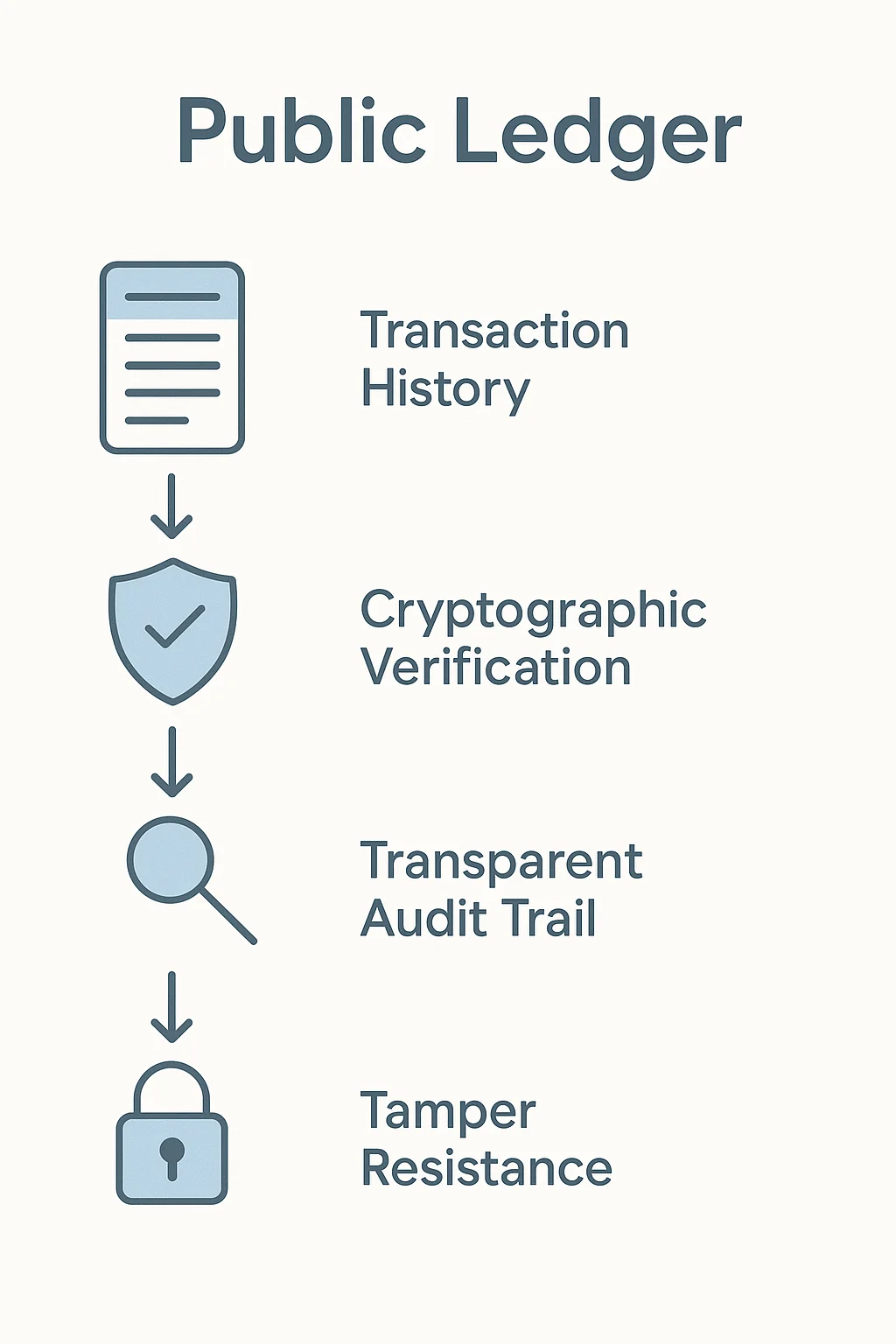Public Ledger
Public Ledger: Transparent Transaction Records
Public ledgers record all transactions transparently where anyone can verify the complete history of asset movements. It’s like having a bank statement that everyone can read but no one can forge.
A public ledger is a distributed database that records all transactions transparently, allowing anyone to verify and audit the complete history of asset transfers without requiring trust in central authorities. Blockchain networks maintain these ledgers through consensus mechanisms.
How Public Ledgers Work
Transparent recording makes all transactions visible to anyone who wants to examine the network’s transaction history and current state.
Immutable history prevents alteration of past records through cryptographic hashing and consensus mechanisms that make tampering detectable.
Verification capability enables anyone to independently confirm transaction validity and account balances without trusting intermediaries.

Real-World Examples
- Bitcoin blockchain records every transaction since the genesis block in 2009
- Ethereum ledger tracks all ETH transfers and smart contract interactions publicly
- Block explorers like Etherscan provide user-friendly interfaces for examining public ledger data
Why Beginners Should Care
Trust elimination through transparency means you don’t need to trust banks or institutions to verify account balances and transaction history.
Privacy considerations since public ledgers reveal transaction patterns and balances, though personal identities may remain pseudonymous.
Audit capabilities enable independent verification of cryptocurrency supply, distribution, and transaction validity by anyone with internet access.
Related Terms: Blockchain, Transparency, Immutability, Verification
